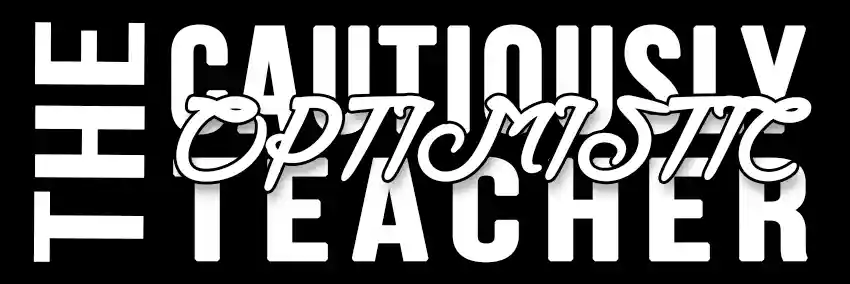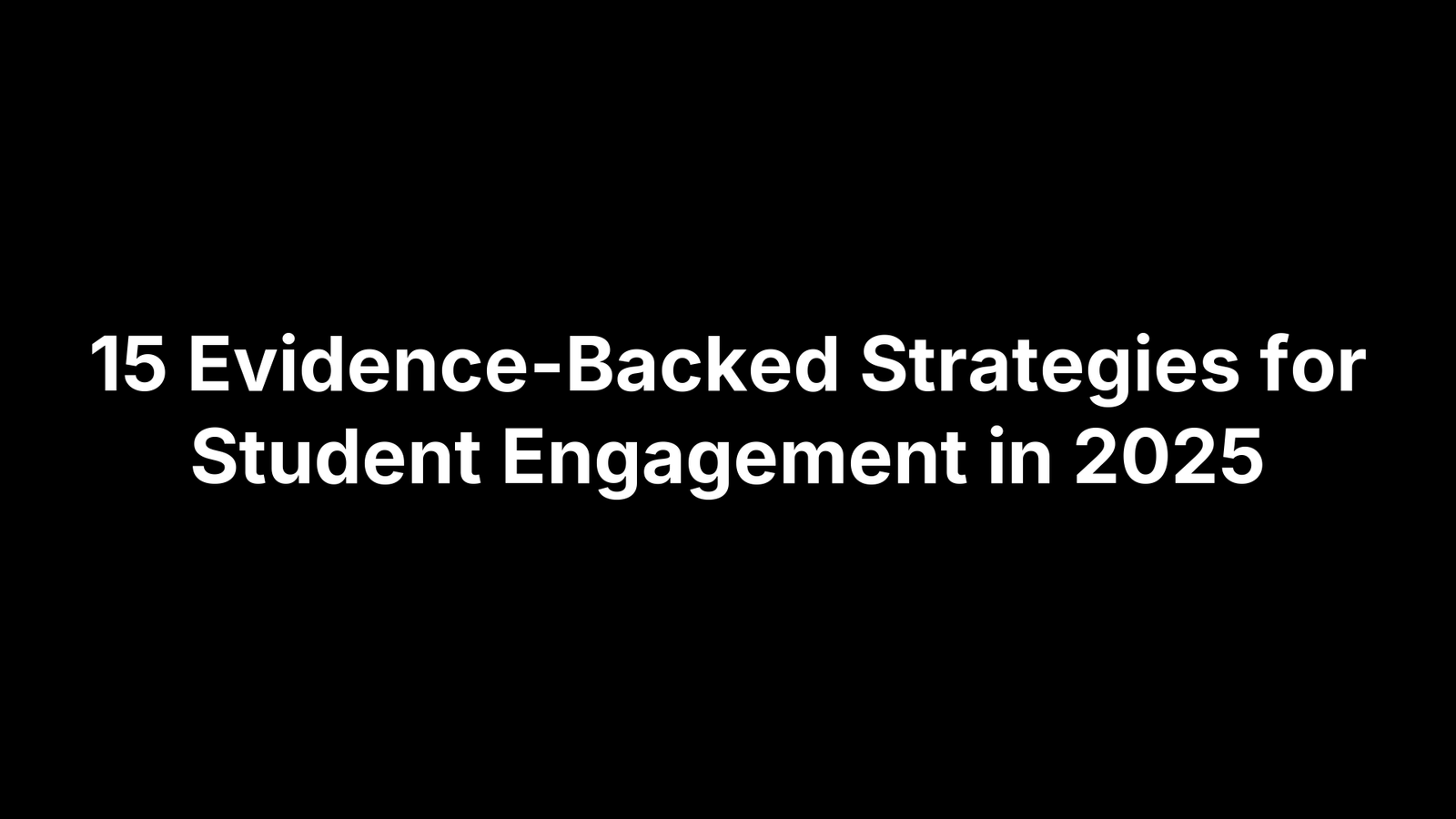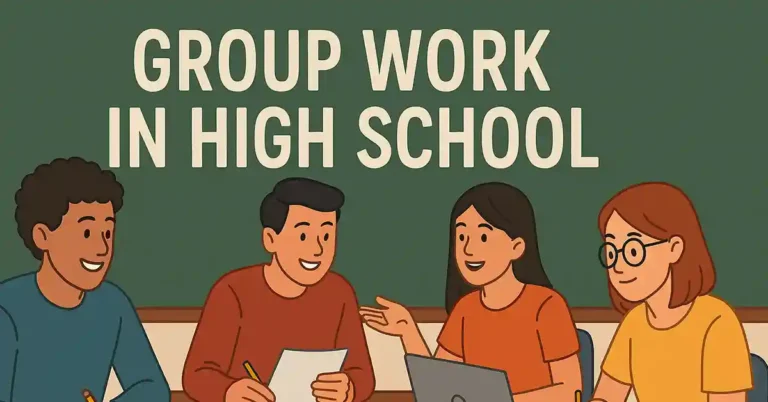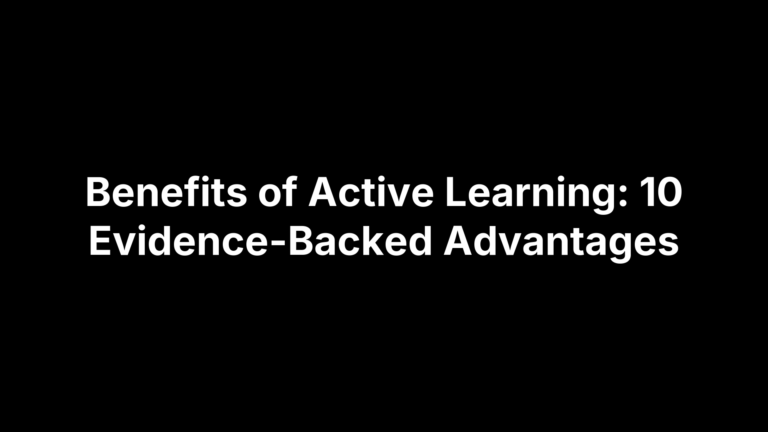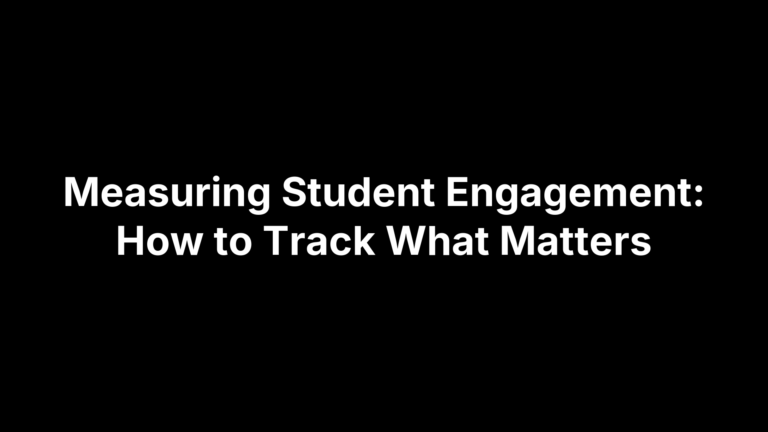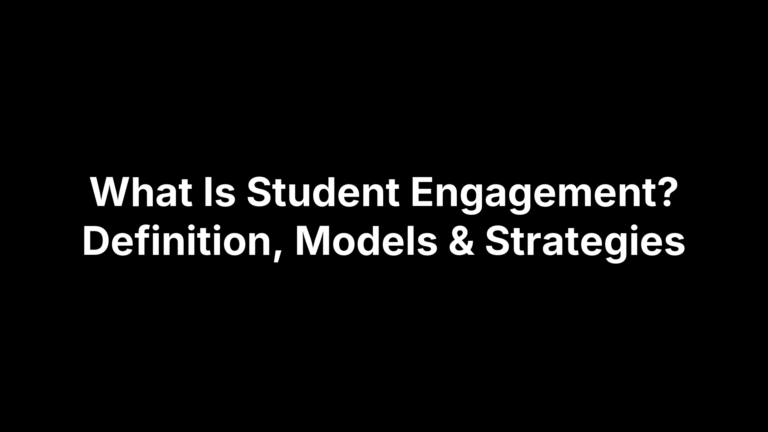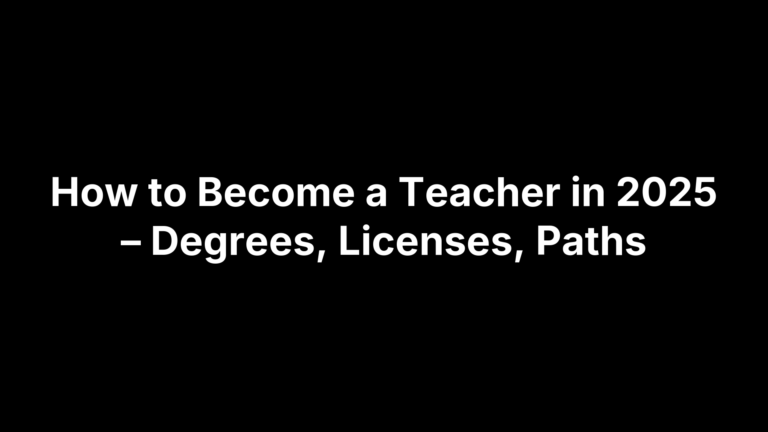15 Strategies for Student Engagement That Actually Work
Scrolling eyes and silent screens don’t mean students are tuned out—they’re waiting for learning that feels as interactive as the apps in their pockets. Engagement has become the gating factor between instruction and impact, especially after pandemic gaps, AI-assisted shortcuts, and hybrid schedules reshaped attention spans. Teachers now need tactics that spark curiosity, invite participation, and withstand distraction.
The next pages deliver 15 classroom-ready strategies proven by fresh meta-analyses and 2023-2025 EdTech studies. Each section pairs the evidence with a step-by-step workflow, pitfalls to avoid, and time-saving AI tools you can try today. Whether you teach AP Chemistry or kindergarten art, you’ll leave with a short list you can pilot tomorrow morning—and a framework for measuring what works.
1. Personalize Instruction with AI-Driven Differentiation
AI now lets teachers personalize at scale without drowning in prep work.
What the latest studies reveal
Two 2024–25 multi-district trials reported 25–35 % higher engagement when adaptive tasks matched readiness and interests. Results support UDL guidelines on flexible content and choice.
Step-by-step classroom workflow
- Collect reading data & student interest survey
- Feed into Differentiated Instruction Helper; select three tiers
- Push activities through your LMS
- Auto-generate exit tickets with Question Generator
- Check analytics, reteach gaps
Tool spotlight: The Cautiously Optimistic Teacher
- Differentiated Instruction Helper: instant leveled tasks
- Worksheet Maker: turns keywords into worksheets
- Report Card Commentor: bulk feedback, freeing time for 1-to-1 coaching—prime engagement fuel
2. Gamify Learning with Structured Competition and Rewards
Healthy competition taps Gen Alpha’s gamer instincts and turns routine practice into must-play challenges without sacrificing rigor.
Evidence behind classroom gamification
A 2024 meta-analysis covering 42 studies found point-based systems and instant feedback raise on-task behavior by 20 %, crediting dopamine-driven motivation loops.
Practical game formats for 2025 classrooms
Mix no-prep live quizzes, LMS badge pathways, escape-room stations, or low-tech card trivia for every subject.
Avoiding common gamification pitfalls
Swap solo leaderboards for team totals, reward mastery over speed, and cap prizes so novelty doesn’t eclipse learning.
3. Spark Curiosity Through Inquiry-Based Learning
A well-placed question can beat any lecture at pulling students in. Inquiry-based learning turns the class into investigators, boosting ownership and sustained attention.
Research summary
2024 PISA follow-ups showed inquiry-rich classrooms scored 11 points higher in self-regulation and persistence. Researchers credit the “Need-to-Know” curiosity trigger for deeper cognitive engagement.
Scalable inquiry structures
- 5E cycle
- Question Formulation Technique (QFT)
- Text-anchored Socratic seminars with “Why does…?” or “What if…?” starters
Assessment & support
Check progress via exit slips, student-built rubrics, and weekly reflection logs; reteach with micro-lessons when misconceptions pop up.
4. Offer Voice & Choice with Learning Menus and Choice Boards
Choice flips compliance into ownership, letting students steer pace, format, and sometimes content without sacrificing academic rigor. Research consistently links autonomy to higher engagement and fewer disruptions.
Why autonomy fuels engagement
Self-Determination Theory says autonomy plus competence and relatedness equals motivation; a 2023 study found classrooms with structured choice cut off-task behavior by 40 %.
Designing effective choice boards
Organize tasks into MUST DO, SHOULD DO, ASPIRE TO; align each to the same standard. Balance media—video, infographic, essay—to match diverse strengths.
Managing logistics
Color-code choices, set deadlines, and build five-minute peer checks to keep students accountable. Digital boards sync with your LMS.
5. Integrate the 4Cs: Collaboration, Communication, Critical Thinking, Creativity
Blending the 4Cs packages engagement with future-ready skills. New employer surveys and 2024–25 classroom studies show students engage more deeply when lessons demand collaboration, communication, critical thinking, and creativity.
Evidence for the 4Cs framework
A 2025 Gallup-RAND report linked 4C-rich classrooms to 18 % higher attendance and doubled student self-reported relevance scores across subjects.
Classroom structures for each “C”
- Collaboration: jigsaw roles, reciprocal teaching cohorts
- Communication: student podcasts, structured debates
- Critical thinking: case-based evidence charts, mystery prompts
- Creativity: rapid design sprints, maker challenges
Assessment strategies
Use a 4C rubric, peer critique circles, and reflective journals; triangulate scores to spotlight which competency needs next-week focus.
6. Flip the Classroom for Interactive In-Class Practice
Flipped learning moves direct instruction to homework and frees class time for guided, interactive practice.
Research outcomes since 2023
An April 2024 meta-analysis of 56 STEM trials found flipped classes gained 28 % more questions and 17 % fewer device distractions.
Implementation blueprint
Create sub-8-minute micro-videos with two embedded checks, add guided notes, then attach an auto-graded two-item quiz in the LMS.
Maximizing in-class time
In class, cycle through: reteach table, peer-assist station on practice sets, and extension corner with challenge problems or design tasks.
7. Solve Real-World Problems with Project-Based Learning (PBL)
When tasks mirror real problems outside school, students stop asking “why do this?”. Project-Based Learning supplies authentic stakes, lighting up every engagement domain.
Current evidence
A 2024 Lucas Foundation multi-state trial reported 31 % higher motivation scores and stronger delayed recall for PBL cohorts. Neuroscientists credit increased situational interest and collaborative dopamine bursts.
Designing a high-impact 2025 PBL unit
- Craft a driving question that matters locally
- Map standards to checkpoints and mini-lessons
- Use Trello or Padlet for transparent workflow
- Schedule expert feedback from community partners
Showcasing learning
Finish with exhibitions or live streams for an authentic audience.
8. Use Microlearning and Bite-Sized Content Delivery
Among the smartest strategies for student engagement, splitting lessons into snack-sized pieces keeps cognitive load low and curiosity high—perfect for today’s distracted learners.
Science of microlearning
Studies on spaced attention curves show 7–10-minute chunks yield 30 % more retention and on-task behavior. Neuroimaging links tight chunks to reduced extraneous processing.
Practical formats
- Three-slide micro-lectures
- Single-concept discussion prompts
- 60-second recap podcasts
Leveraging tech
Set LMS release conditions and let an AI bot send push-notification reminders for just-in-time review.
9. Build Classroom Community with Social-Emotional Check-Ins
Community isn’t fluff—it’s the emotional glue that keeps learners showing up ready to risk wrong answers and engage with peers.
Why SEL drives engagement
A 2023 meta-analysis covering 213 SEL programs found that lowering baseline cortisol correlated with 12 % more voluntary participation and stronger peer support—core ingredients for sustained strategies for student engagement.
Daily/weekly routines
- Doorway mood meter
- Rose-Thorn-Bud journals every Friday
- 3-minute breathing video between blocks
- Emoji check-in on the LMS every Monday
Responding to student data
Track patterns; regroup partners, loop in counselors, or co-create class norms when stress spikes—swift, visible action shows check-ins matter.
10. Reinforce Learning Through Retrieval Practice & Spaced Repetition
Few tactics cement learning like making the brain pull information back out. Daily retrieval plus spaced review multiplies retention and keeps students alert, ranking among the top engagement moves for 2025.
Evidence snapshot
2024 multi-school trials confirmed Roediger & Karpicke: spaced retrieval raised quiz scores 23 % while halving study time.
Classroom techniques
- Brain dump on scratch paper
- Two-minute free recall with peers
- Low-stakes, auto-graded LMS quizzes
- Follow Day 1-3-7-14 spacing cycle
Tracking progress
Graph cumulative recall scores every Friday; celebrate percentage gains, not raw points, to keep anxiety low and motivation high.
11. Add Movement with Kinesthetic Learning Breaks
Short, well-timed movement jolts can reboot attention faster than another slide deck, making them simple yet powerful strategies for student engagement.
Neuroscience of movement
Brief bursts of exercise boost brain-derived neurotrophic factor (BDNF); a 2024 classroom study logged a 13 % jump in on-task behavior after 15-minute activity breaks.
Easy movement integration
- Gallery walks to preview sources
- Stand-up–sit-down opinion polls
- Role-play simulations of historical events
- “Brain-gym” stretches between problem sets
Adapting for all learners
Offer chair stretches, visual timers, and floor-tape paths so mobility-impaired students can join without missing the cognitive boost.
12. Engage Every Student with Interactive Questioning Techniques
When only a few students speak, the rest mentally log off. Intentional questioning structures re-engage the quiet majority and keep attention circulating.
Research overview
2024 studies found Think-Pair-Share lifts participation 35 %, and well-normed cold-calling closes response gaps across gender and ability.
Toolkit of questioning strategies
- Random name wheel
- “No-Opt-Out” prompt
- Socratic fishbowl
- Sentence-stem bank + 10-second wait
Creating a safe answering culture
Affirm partial answers, use “Ask-Another-Add-On” before teacher wrap-up, and invite anonymous polls for sensitive topics.
13. Apply Universal Design for Learning (UDL) Principles
UDL builds access into lessons from the start, making it one of the most flexible strategies for student engagement.
UDL & engagement research
CAST’s 2024 meta-study showed multiple engagement options halved disengagement incidents and raised student agency scores.
Practical checkpoints to hit
- Perception: captions, adjustable text, high-contrast visuals
- Expression: video, infographic, or podcast submission
- Regulation: goal cards, silent-work headphones, stretch timer
Monitoring UDL effectiveness
Track option uptake with heat maps and surveys; adjust supports when interest droops.
14. Empower Students Through Peer Teaching & Collaborative Assessment
Handing the mic to students transforms them from passive listeners into active explainers, doubling comprehension and confidence in every subject.
Evidence supporting peer instruction
Mazur’s peer-instruction studies, echoed by a 2024 UCLA trial, report 12-point concept gains and 60 % longer revision sessions.
Structures to try
Use reciprocal teaching, jigsaw “expert” groups, or rotating “student professor” mini-lessons; archive sessions in your LMS for absent learners.
Building assessment literacy
Coach students to apply single-point rubrics, run two-minute calibration rounds, and require comments tied to criteria, not opinion.
15. Provide Immediate, Formative Feedback Loops
Feedback loses power every hour it’s delayed; instant cues keep students steering their own learning in real time.
Why timing matters
Meta-analyses place formative feedback’s effect size at 0.70. 2024 cognitive studies show motivation peaks when guidance lands within 24 hours—or even inside the same class period.
Feedback tools & methods
Speed trumps length, so lean on comment banks, emoji-coded audio notes, digital stickers, and 90-second desk conferences to deliver quick, specific pointers.
Making feedback actionable
Pair every note with a micro-goal and deadline; require a fast revision or evidence upload before marking the task complete.
Key Takeaways for an Engaged 2025 Classroom
Fifteen evidence-backed strategies for student engagement give you a full playbook, but you don’t have to run every play at once. Start with two that fit your current pain point—maybe AI-driven differentiation for mixed readiness or microlearning to tame shrinking attention spans—then track participation, work quality, and student voice surveys for four weeks. Use those data to refine or layer in a third tactic. Remember: behavioral, emotional, and cognitive engagement feed one another, so even small wins ripple outward. Keep the feedback loop tight, celebrate visible progress, and iterate. When you need ready-made tools or fresh ideas, drop by The Cautiously Optimistic Teacher for AI helpers, lesson templates, and a weekly dose of optimism.
